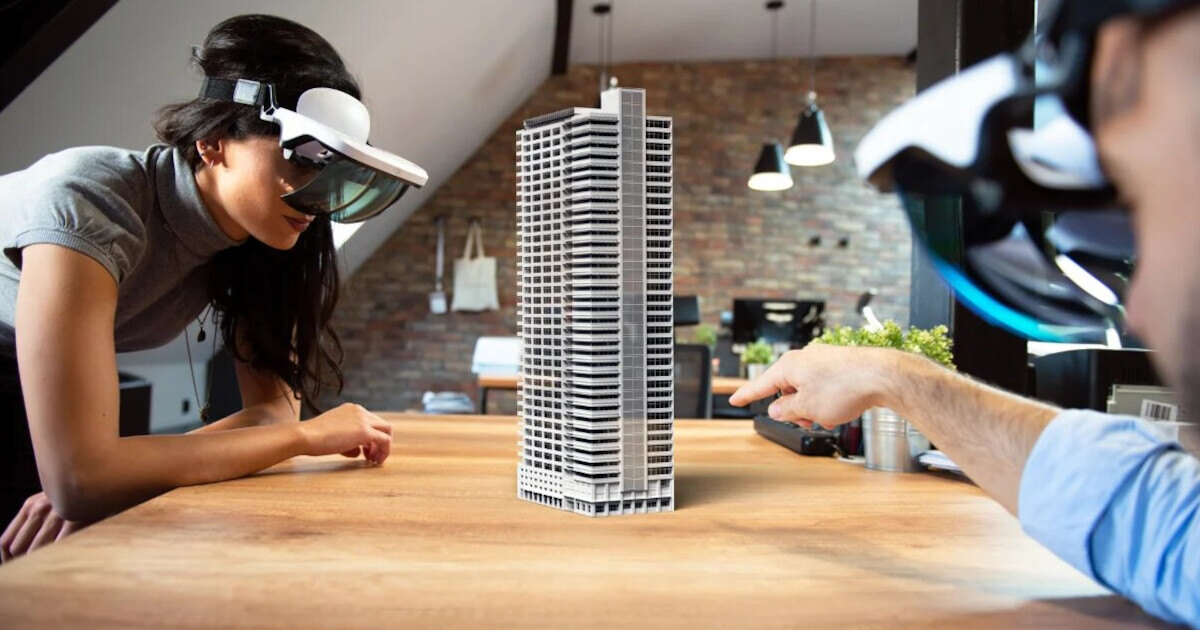For the UH residential project in Berlin Adlershof, the budget was tight. Yet thanks to BIM and a timber hybrid construction method with a high degree of prefabrication, it was not exceeded.
In recent years, Berlin has become a real hot spot when it comes to affordable housing. The pressure on politicians and municipal housing associations to create new apartments at socially acceptable prices is high – and is supported accordingly by the contractors who deliver the construction projects. This is also the case with a residential ensemble in Berlin Adlershof that will be completed in 2019. Since some of the apartments were to be rented out as subsidized social housing and the rent index in Adlershof also set limits, the project was under enormous cost pressure. To cope with this, those responsible relied on a high degree of prefabrication and BIM. Kaden+Lager (now LAGERSCHWERTFEGER and Kaden+) used Allplan for the model-based planning.
![UH_Visu_200511_Modell_LS_09[1]_NEU](https://blog.allplan.com/hs-fs/hubfs/DE_Blog/Architektur/Wohnen%20im%20Holzhybridbau%20in%20Berlin%20Adlershof/UH_Visu_200511_Modell_LS_09%5B1%5D_NEU.jpg?width=1200&name=UH_Visu_200511_Modell_LS_09%5B1%5D_NEU.jpg) © LAGERSCHWERFEGER und Kaden+
© LAGERSCHWERFEGER und Kaden+
UH – Urban timber construction
The project of the Berlin housing company HOWOGE is called UH – Urbaner Holzbau (Urban Wood Construction), and this is also the goal: the three point buildings, with a total of 42 one- to four-room apartments, were realized in wood-hybrid construction. While the ceilings and access cores are made of reinforced concrete, timber frame elements form the building envelope. Facades made of pre-grey interlocking wood formwork give the ensemble a uniform appearance. The wood-reinforced concrete construction is also placed on a masonry base.
Client demands digital twin
Kaden+Lager had already been working with BIM for some time, but what was new for the office in this project was the intensity with which the digital planning method was demanded and used by the client and the general contractor. For example, HOWOGE explicitly requested an as-built model and sometimes gave precise specifications regarding the attributes it wanted to use later in operation.
![UH_Visu_171204_Modell_LS_07[1]_NEU](https://blog.allplan.com/hs-fs/hubfs/DE_Blog/Architektur/Wohnen%20im%20Holzhybridbau%20in%20Berlin%20Adlershof/UH_Visu_171204_Modell_LS_07%5B1%5D_NEU.jpg?width=1200&name=UH_Visu_171204_Modell_LS_07%5B1%5D_NEU.jpg) © LAGERSCHWERFEGER und Kaden+
© LAGERSCHWERFEGER und Kaden+
A 3D model from Allplan enriched with attributes served as the basis for this digital twin. This model, which was constructed with intelligent components, among other things, was already useful for determining masses and quantities and for creating specifications for the tender. It also provided the basis for further specialized planning, in particular for the building services. The data exchange was carried out using OPEN BIM via the IFC format. BIM coordination was handled by the timber construction company, Brüninghoff. At the same time, the timber manufacturers transferred the Allplan model into the work and assembly planning for the timber components.
![UH_Visu_171204_Modell_LS_06[1]_NEU](https://blog.allplan.com/hs-fs/hubfs/DE_Blog/Architektur/Wohnen%20im%20Holzhybridbau%20in%20Berlin%20Adlershof/UH_Visu_171204_Modell_LS_06%5B1%5D_NEU.jpg?width=1200&name=UH_Visu_171204_Modell_LS_06%5B1%5D_NEU.jpg) © LAGERSCHWERFEGER und Kaden+
© LAGERSCHWERFEGER und Kaden+
Finished shell within one week
Overall, the use of BIM resulted in a somewhat longer planning phase than with traditional 2D planning. However, in combination with the highly digitalized production and the high degree of prefabrication of the timber components, construction times were drastically reduced in return. The early development of the model enabled perfectly timed construction scheduling and sometimes just-in-time deliveries. The shell of the building was completed within a week. In addition, the intensive planning ensured much higher quality on the construction site, as did the prefabrication. This resulted in less susceptibility to errors thanks to the resulting cleaner construction site. All this contributed significantly to the fact that the project could be realized within the tight budget.














